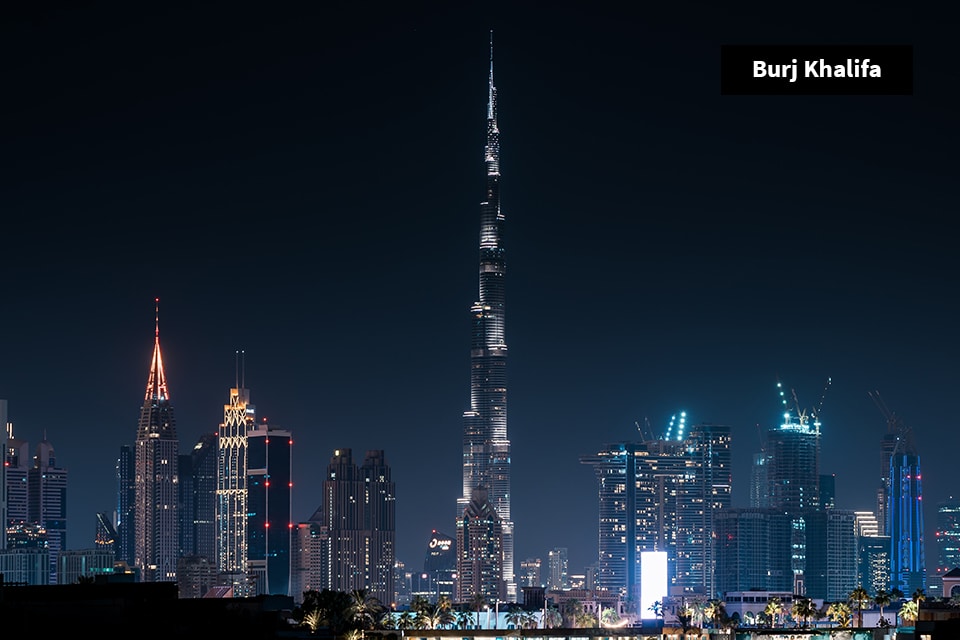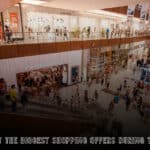The Burj Khalifa, located in Dubai, United Arab Emirates, is the world’s highest Skyscraper. It is a Prominent Landmark that Dominates the city’s skyline, standing at 828 meters (2,716 feet).
The Burj Khalifa’s, designed by Skidmore, Owings & Merrill was, completed in 2010 and has since become a symbol of Dubai’s Modernism and Ambition.
The Burj Khalifa has a sleek and elegant style that is, Influenced by Islamic architecture. Its façade is, coated with Reflective glass panels, which not only add to its Eye-catching beauty but also give Energy-Saving benefits.
The building narrows as it rises, Culminating in a spire that adds to its majesty.
Inside world:
The Burj Khalifa is home to a mix of Residential flats, luxury hotels, corporate offices, and entertainment venues.
The Armani Hotel, housed within the tower, provides guests with a Luxurious experience, while the Observation decks provide Stunning views of the city and beyond.
At the Top SKY, the tallest Observation deck is located on the 148th level and offers Unrivaled Panoramic views.
Record Holder:
The Burj Khalifa’s holds multiple world records, including the tallest Freestanding Skyscraper, the most stories, and the highest Occupied floor.
It is a Monument to human Ingenuity, Engineering prowess, and a desire to push the limits of what is possible in architecture and construction.
Millions of visitors rush to the Burj Khalifa each year to marvel at its Magnificence, take in the Breathtaking vistas, and see this Astounding Accomplishment of human achievement.
Development of Burj Khalifa:
The Burj Khalifa construction began in the early 2000s when the government of Dubai Envisioned Establishing an iconic Monument that would cement the city’s position as a global center of trade and tourism. Emaar Properties, based in Dubai, oversaw the project.
The following is an Overview of the important stages in the creation of the Burj’s Khalifa:
Planning:
The Architectural company Skidmore, Owings & Merrill (SOM) was, chosen to design the Burj’s Khalifa. The design team, led by Architect Adrian Smith was, inspired by Islamic architecture, particularly Geometrical patterns Prevalent in Islamic art.
A thin tower with Setbacks was part of the design concept to reduce wind forces and improve Structural Stability.
Construction:
Groundbreaking occurred in 2004 and building Formally Commenced in 2005. A deep foundation structure Consisting of over 192 bored Concrete piles dug into the ground was, used to maintain the tower’s great height.
The core of the tower was built with C50 High-strength Reinforced Concrete, while the outside façade was, built with Aluminum and Reflective glass panels.
Milestones in Height:
As the building continued, the Burj Khalifa broke various height records. It Exceeded the height of the Taipei 101 to become the world’s tallest tower in 2007. By 2008, it had Exceeded the height of Toronto’s CN Tower to become the world’s highest Freestanding Skyscraper.
Finally, in 2009, it Exceeded the height of North Dakota’s KVLY-TV mast to become the tallest Man-made structure ever Constructed.
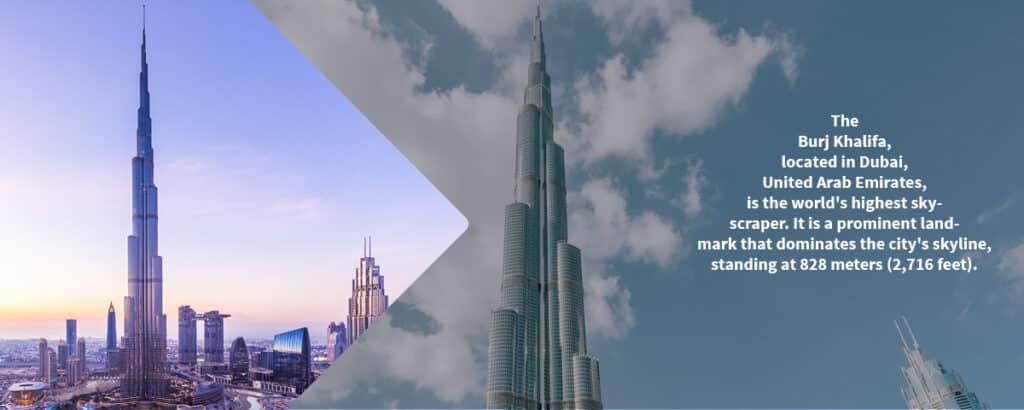
Completion and Inauguration:
The Burj’s Khalifa was, finished in 2010 and Inaugurated on January 4, 2010. The opening ceremony Included an incredible display of Fireworks and light shows.
The Observation decks of the tower were, made public, Providing visitors with amazing views over Dubai and its Surroundings.
The Burj Khalifa has received worldwide Recognition since its Completion and has become an iconic symbol of Dubai’s Modernism and Ambition.
It has made a Substantial contribution to the city’s tourism business, Attracting millions of visitors each year who come to see the Architectural wonder and enjoy its opulent Amenities.
Construction and Designing:
The Burj Khalifa construction and design required new Engineering techniques and precise planning.
The following are the main parts of the construction and design process:
Foundation:
The foundation was the first step in the construction of the Burj Khalifa.
A deep foundation system consisting of approximately 192 drilled concrete piles, each 1.5 meters in diameter, was, used to support the huge weight of the structure.
For optimal stability, these piles were bored up to 50 meters into the ground, reaching the bedrock.
Structure:
The Burj’s Khalifa is built with a reinforced concrete structural system.
The major vertical support is provided by the tower’s core, known as the central hexagonal core.
The core is, made of C50, a high-strength reinforced concrete designed specifically to withstand the great stresses imposed by the building’s height and the region’s severe winds.
Buttressed Core:
As the tower rises, the central core shrinks in size, forming setbacks or “wings” that aid in reducing wind forces and improving structural stability. These setbacks also serve as outdoor patios for the residences.
Exoskeleton Design:
The exoskeleton design of the Burj Khalifa is one of its most distinguishing aspects. The façade is made of aluminum and reflecting glass panels that glitter in the sunlight.
The exoskeleton not only adds visual value to the skyscraper but also improves structural integrity by equally dispersing forces and eliminating the need for interior columns.
Wind Engineering:
Because of the enormous height, wind engineering was critical in the design process.
The aerodynamic design of the Burj’s Khalifa, setbacks in the construction, and the existence of a tuned mass damper towards the summit of the tower all help to mitigate wind effects.
The damper helps to lessen the lateral movement of the tower induced by wind gusts.
Sustainability:
The Burj’s Khalifa has environmentally friendly design elements.
A condensate collecting system gathers and reuses water, a high-performance building envelope to reduce heat gain, energy-efficient lighting systems, and waste management methods are among them.
The tower holds LEED (Leadership in Energy and Environmental Design) accreditation for its environmentally friendly design and operation.
Elevators and Services:
Otis Elevator Company constructed the sophisticated elevator system that houses the Burj Khalifa. It features high-speed elevators that can go up to 18 meters per second, making them some of the world’s fastest elevators.
To satisfy the needs of its tenants, the building also has a cutting-edge mechanical, electrical, and plumbing (MEP) system.
Burj’s Khalifa construction was an engineering marvel, combining sophisticated technology, imaginative design, and rigorous planning to build an iconic and structurally robust skyscraper.
Here are some details about the Burj Khalifa
Location:
The Burj Khalifa is situated in Downtown Dubai, adjacent to the Dubai Mall and overlooking the man-made Burj Khalifa Lake.
Height:
As of my last update in January 2022, the Burj Khalifa stands at a staggering height of 828 meters (2,717 feet).
Observation Decks:
The Burj Khalifa features two observation decks, At the Top and At the Top Sky. These decks offer breathtaking views of Dubai and beyond.
At the Top is located on the 124th and 125th floors, while At the Top Sky is on the 148th floor. Tickets can be purchased online or at the ticket counters in Dubai Mall.
Restaurants and Facilities:
The Burj Khalifa houses several restaurants and lounges, including Atmosphere on the 122nd floor, offering fine dining with panoramic views.
There are also various facilities such as corporate suites, residential units, fitness facilities, and more.
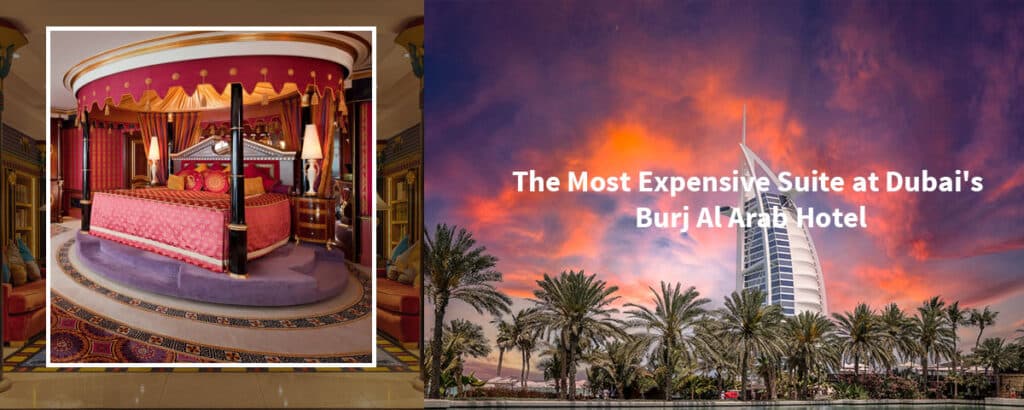
Features:
The Burj Khalifa is well-known for several notable features and specialties that distinguish it from other structures:
Tallest Skyscraper:
The Burj Khalifa is the world’s tallest skyscraper, reaching a height of 828 meters (2,716 ft). Its sheer height is a feat of engineering and a memorable symbol of human achievement.
Architectural Wonder:
The Burj Khalifa design is a work of art. Its sleek and beautiful design, reminiscent of a strong minaret is, inspired by Islamic architecture.
Setbacks and the exoskeleton design not only improve its visual attractiveness but also its structural stability.
Observation Decks:
Visitors to the Burj Khalifa can enjoy panoramic views of Dubai and beyond from the observation decks.
The Top SKY, positioned on the 148th level, offers a unique vantage point and a completely unforgettable experience.
Vertical Transportation:
The tower has an advanced elevator system, including some of the world’s fastest elevators.
Visitors and tenants are, transported to various levels at breakneck speeds by these high-speed elevators, guaranteeing efficient vertical movement within the skyscraper.
Mixed-Use building:
The Burj Khalifa is a mixed-use building in addition to a residential and business skyscraper.
It is home to beautiful residential flats, high-end hotels, prestigious corporate offices, and a diverse range of retail and leisure amenities, resulting in a thriving community within its borders.
World-Class Amenities:
The Armani Hotel, built by fashion icon Giorgio Armani, is one of the tower’s world-class amenities. The hotel offers guests an extravagant and luxurious experience, with great hospitality and service.
Iconic Light Shows:
The Burj’s Khalifa is well-known for its enthralling light shows that brighten its façade.
During special occasions and festivities, these spectacular LED displays create hypnotic patterns and motifs, transforming the tower into a dazzling spectacle.
Global landmark:
The Burj Khalifa has become an instantly identifiable global icon, as well as a symbol of Dubai’s modernism and ambition.
It has made a substantial contribution to the city’s tourism business, attracting millions of visitors each year who come to witness its magnificence and feel its awe-inspiring presence.
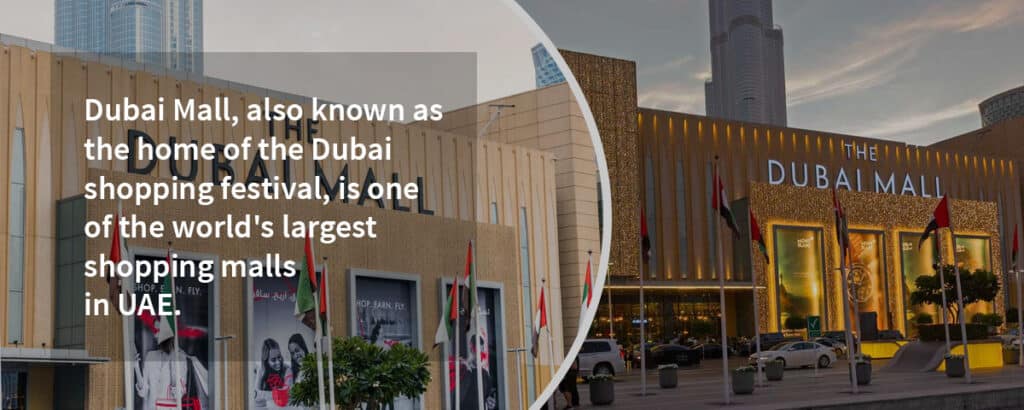
Controversy:
While the Burj Khalifa has received widespread acclaim for its architectural and engineering achievements, it has also been the subject of some controversy and criticism.
Here are a few prominent grounds for contention about the Burj Khalifa:
Labor Conditions:
The Burj Khalifa development, like many large-scale projects in the region, has been scrutinized for labor conditions.
Poor working conditions, low wages, and inadequate safety measures for migrant workers participating in its construction have been reported.
Concerns have been expressed about workers and human rights in the UAE construction industry because of these issues.
Environmental Impact:
Because of the enormous size of the Burj Khalifa and its energy-intensive operations, environmentalists are concerned about its environmental impact.
The tower uses a lot of electricity and water daily, which increases carbon emissions and puts pressure on local resources.
The tower’s energy usage and environmental imprint, critics claim, should have been more extensively addressed and mitigated during its design and construction.
Economic Sustainability:
The Burj Khalifa was built during an era of rapid expansion in Dubai.
Some critics have expressed worries about the economic viability of such extravagant projects, claiming that enormous investments in iconic structures such as the Burj Khalifa may take resources away from critical social and infrastructure development projects.
Symbol of inequality:
The Burj’s Khalifa, with its opulent residential flats and high-end services, has been viewed as a symbol of income inequality and wealth imbalance by some.
The tower’s exclusivity and association with richness have spurred issues in Dubai concerning social inequality and wealth distribution.

Awards:
The architectural design, engineering, and sustainability of the Burj Khalifa have all garnered important prizes and recognition. The Burj’s Khalifa has received the following important prizes and accolades:
2010:
The Burj Khalifa earned the Emptor is Skyscraper Award in 2010 for the finest new skyscraper completed that year.
The prize honors outstanding achievement in skyscraper design and construction.
2010:
The Burj Khalifa received the International Architecture Award from the Chicago Athenaeum: Museum of Architecture and Design and The European Centre for Architecture Art Design and Urban Studies in 2010.
2011:
The Burj’s Khalifa received the International High-rise Award in 2011, presented by the City of Frankfurt and the Detaches Architecture Museum (German Architecture Museum).
The award recognizes the most creative high-rise buildings in the world, as well as their positive impact on cities and communities.
2012:
The Burj Khalifa received the CTBUH Global Icon Award in 2012, which celebrates a structure that has had a substantial and lasting impact on tall building design and the urban environment.
2014:
The Burj Khalifa received LEED Gold certification in 2014, an internationally recognized rating for sustainable design and construction. The certification recognizes the tower’s energy-efficient technologies, water conservation measures, and environmentally friendly building methods.
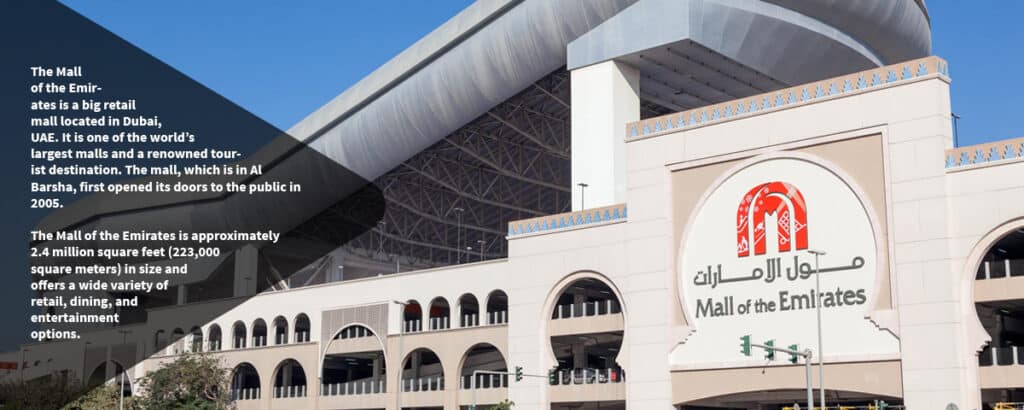
FAQ’S
The Burj Khalifa was completed in 2010.
The Burj Khalifa is located in Dubai, United Arab Emirates.
The Burj Khalifa stands at a height of 828 meters (2,716 feet).
The Burj Khalifa was designed by the architectural firm Skidmore, Owings & Merrill (SOM).
Conclusion
The Burj Khalifa is a colossal architectural wonder in Dubai, United Arab Emirates. It was completed in 2010 and is the world’s highest skyscraper, standing at an incredible 828 meters (2,716 ft).
Skidmore, Owings & Merrill designed the Burj Khalifa, which has a sleek and beautiful design inspired by Islamic architecture.
The towering presence, unique architecture, and distinguished position of the Burj Khalifa have made it a must-see destination, attracting millions of visitors each year.
It is a testimony to human creativity and a proud emblem of Dubai’s incredible progress and accomplishments.
